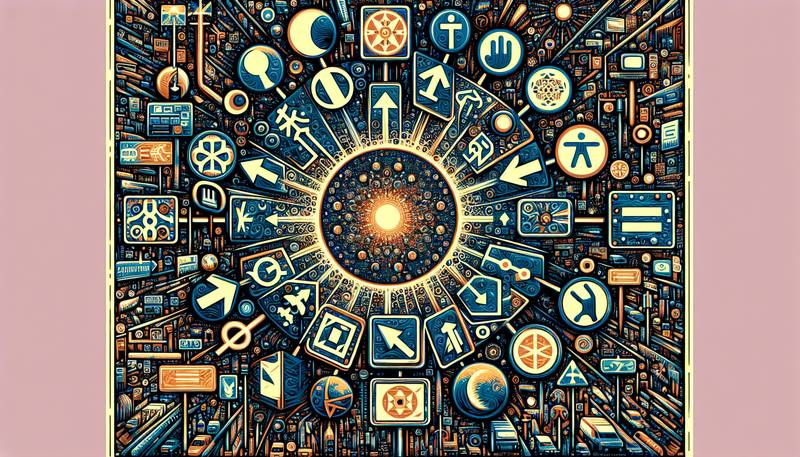Sign Making: A Blend of Craft and Tech

Signs, Symbols, and the Cosmic ConnectionSigns. They're all around us, man. From the moment we wake up in the morning, bleary-eyed and craving whatever vice gets us going, to the moment we crash into the nightmare that is unconsciousness, we are bombarded by these little nuggets of information. Our modern world is an orgy of visual stimuli, a relentless assault on our senses, and none of it would be possible without the sign making industry.But what is sign making, really? Is it an art, a craft, a science? Or is it all three, a dizzying cocktail of creativity, technical know-how, and unbridled ambition? In this twisted journey, we will delve into the world of sign making and explore how both craft and technology have shaped this fascinating industry.The Ancient Art of Sign MakingSign making is as old as civilization itself, dating back to the earliest days of human communication. From the cave paintings of Lascaux to the hieroglyphics of ancient Egypt, humans have been creating signs to convey information, express emotions, and record the primitive ramblings of our ancestors.The materials and techniques used in sign making have evolved over the millennia, from chiseling stone tablets to painting frescoes on plaster walls, but the fundamental principles remain the same. The art of sign making is all about creating a visual representation of an idea, a message that can be understood by others even if they don't speak the same language, or can't read the words because they're too strung out on a particularly potent blend of peyote and absinthe.From Handcraft to AutomationFor centuries, sign making was a predominantly manual process, requiring skilled craftsmen to painstakingly create each piece by hand. But as technology advanced, so too did the sign making industry. The introduction of the printing press in the 15th century allowed for the mass production of printed materials, revolutionizing the world of signs and paving the way for the glorious excess of today's advertising industry.Further advancements in technology, like the industrial revolution and the rise of machines, saw a shift from artisanal handiwork to mass-produced signage. No longer was sign making the exclusive domain of the skilled craftsman; now, a single machine could churn out hundreds or even thousands of identical signs in a fraction of the time. As a result, sign making became more affordable and accessible, allowing even the most cash-strapped business owner to advertise their wares with gusto.Enter the Digital AgeWith the advent of computers and the internet, sign making entered a new era of possibility and innovation. Suddenly, the humble sign was no longer limited to static images and text; now, it could include moving images, flashy animations, and interactive components that boggled the mind and sparked the imagination.But the digital age hasn't just transformed the visual aspect of sign making; it has also revolutionized the way signs are created. Today, sign makers can use computer-aided design (CAD) software to design signs with incredible precision and detail, and computer numerical control (CNC) machines to produce them with unparalleled speed and accuracy.3D Printing: The Future of Sign Making?As technology continues to evolve at an alarming (and somewhat disturbing) pace, the sign making industry must keep up or risk being left in the dust. And one new development is poised to change the game entirely: 3D printing.Imagine a sign that's not just a two-dimensional print on a flat surface, but a fully realized, three-dimensional object, complete with intricate details, wild textures, and mind-bending shapes. This is the promise of 3D printing, a technology that's already being used to create everything from medical implants and aerospace components to fashion accessories and edible treats.For the sign making industry, 3D printing offers a whole new world of possibilities. Customization, personalization, and limitless creativity are now within reach, and the signs of the future will undoubtedly be like nothing we've seen before.Embrace the MadnessSo there you have it, my friends: the wild and wonderful world of sign making, a blend of craft and tech that spans the entire spectrum of human history and beyond. Whether it's cave paintings or digital billboards, hand-carved signs or 3D printed masterpieces, the art of sign making has always been a reflection of our society and our relentless quest for self-expression.As we hurtle through space on this rock we call home, who knows what the future holds for sign making? But one thing's for sure: it's going to be one hell of a ride. So buckle up, grab your favorite mind-altering substance, and prepare to embrace the madness that is the world of signs.
|
|







